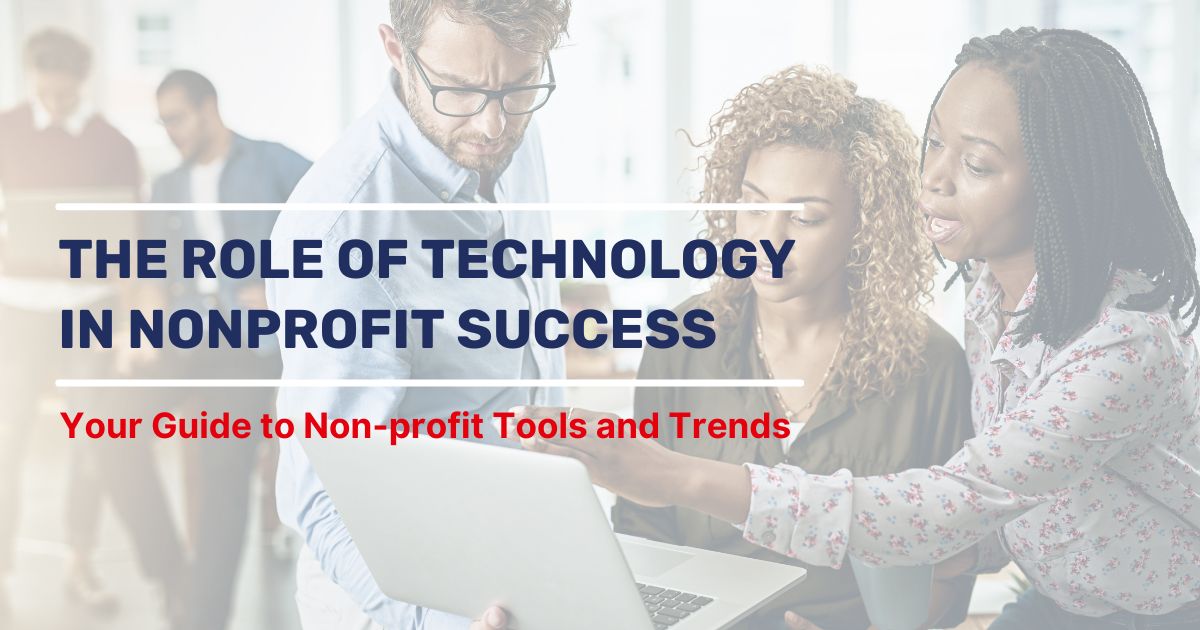

The Role of Technology in Nonprofit Success: Your Guide to Tools and Trends
In a rapidly evolving digital landscape, nonprofit organizations are harnessing the power of technology to amplify their impact. From streamlining fundraising efforts to improving donor engagement, technology has become an indispensable tool in the nonprofit sector. We'll explore the key tools and trends shaping the role of technology in nonprofit operations.
The Changing Landscape of Nonprofit Operations
Nonprofit organizations have come a long way in the last decade. The rise of technology has transformed the way they operate, opening new avenues for fundraising, outreach, and mission fulfillment. With more people relying on digital platforms for communication and transactions, nonprofits have had to adapt to remain relevant and effective.
However, this digital transformation also presents challenges. Nonprofits must navigate a complex landscape of tools, trends, and strategies to make the most of technology while ensuring data security and privacy.
Key Technology Tools for Nonprofits
1. Donor Management Software
Donor management software is the backbone of many nonprofit operations. It helps organizations keep track of their donors, donations, and engagement efforts. With this tool, nonprofits can personalize their communication with donors, leading to stronger relationships and increased support.
2. Online Fundraising Platforms
Online fundraising platforms have revolutionized the way nonprofits raise funds. They allow organizations to reach a wider audience and collect donations seamlessly. Whether it's through crowdfunding campaigns or donation portals on their websites, nonprofits can now harness the power of the internet to fund their missions.
3. CRM Systems
Customer Relationship Management (CRM) systems help nonprofits manage their relationships with donors, volunteers, and other stakeholders. These systems store valuable data that can be used to tailor communication strategies, track engagement, and identify potential supporters.
4. Social Media Management Tools
Social media platforms are invaluable for nonprofit organizations to connect with their audience, share their stories, and mobilize supporters. Social media management tools make it easier to schedule posts, analyze engagement, and measure the impact of social media marketing.
5. Email Marketing Software
Email marketing remains a highly effective communication tool for nonprofits. Email marketing software enables organizations to create targeted email campaigns, send newsletters, and automate follow-up messages, keeping donors and supporters informed and engaged.
6. Project Management Software
Project management software helps nonprofits stay organized and efficient in their day-to-day operations. It allows teams to collaborate, set deadlines, and track progress on projects, ensuring that resources are used effectively.
Trends Shaping Nonprofit Technology
1. Artificial Intelligence and Machine Learning
Artificial intelligence (AI) and Machine learning are transforming donor analytics. Nonprofits can now analyze donor data more effectively to identify trends, predict donor behavior, and tailor fundraising efforts with AI.
2. Mobile Fundraising Apps
Mobile fundraising apps have gained popularity, making it easier for supporters to donate on the go. These apps often offer features like peer-to-peer fundraising, event registration, and real-time donation tracking.
3. Virtual Reality (VR) and Augmented Reality (AR)
Virtual reality and augmented reality are being used to create immersive storytelling experiences. Nonprofits can transport donors and supporters to the front lines of their missions, creating a stronger emotional connection and driving engagement.
4. Data Security and Privacy
With the increasing use of technology comes a heightened focus on data security and privacy. Nonprofits must prioritize data protection to maintain donor trust and comply with regulations like the General Data Protection Regulation (GDPR).

Overcoming Technology Implementation Challenges
While the benefits of technology in nonprofit operations are clear, there are challenges to overcome, including:
1. Budget Constraints
Nonprofits often operate on limited budgets. To address this challenge, organizations can seek out cost-effective technology solutions, explore grant opportunities, and collaborate with tech-savvy volunteers.
2. Staff Training and Buy-In
Implementing new technology requires staff training and buy-in. It's crucial to invest in training programs and communicate the benefits of technology adoption to staff members.
3. Data Management and Privacy Concerns
Protecting donor data is paramount. Nonprofits must establish robust data management and security protocols to safeguard sensitive information.
The Future of Nonprofit Technology
The future holds exciting possibilities for nonprofit technology:
1. Emerging Technologies
Emerging technologies like blockchain are gaining traction in the nonprofit sector. They offer increased transparency, security, and accountability, which can enhance donor trust.
2. Data-Driven Decision-Making
Nonprofits will increasingly rely on data-driven insights to make informed decisions. Collecting and analyzing data will be key to optimizing fundraising and operations.
3. Continued Growth of Online Giving
The trend of online giving and virtual events is likely to continue, making it essential for nonprofits to develop strong online presences.
Tips for Nonprofits Considering Technology Adoption
For nonprofits looking to embrace technology, here are some tips:
- Align Technology with Your Mission: Ensure that any technology you adopt aligns with your organization's mission and goals.
- Start Small: Don't feel pressured to adopt all available technology at once. Start with tools that address your most pressing needs.
- Invest in Training: Dedicate resources to training your staff to use new technology effectively.
- Stay Informed: Keep up with the latest technology trends and continually evaluate how they can benefit your organization.
Technology has become an integral part of nonprofit operations, offering tools and trends that can amplify their impact. By embracing technology wisely, nonprofits can connect with donors, reach wider audiences, and advance their missions more effectively than ever before. As the digital landscape continues to evolve, nonprofits that adapt and innovate will thrive in their efforts to make the world a better place.
